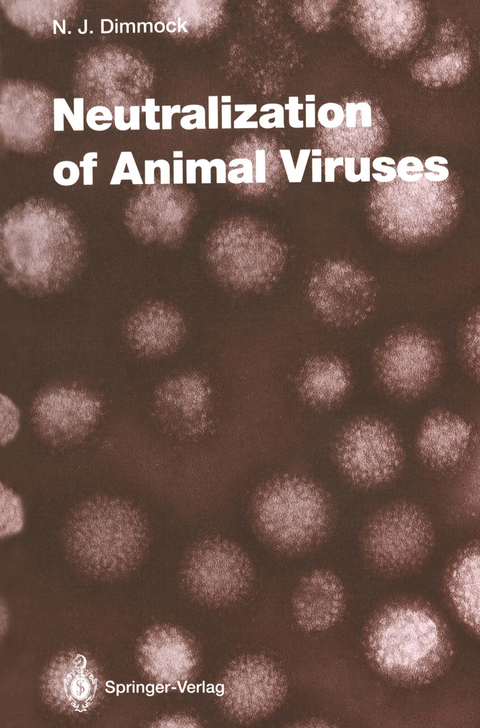
Neutralization of Animal Viruses
Springer Berlin (Verlag)
978-3-642-77851-3 (ISBN)
Nigel Dimmock is an internationally acclaimed virologist who has spent the major part of his career at the University of Warwick's Department of Biological Sciences, where he is currently an emeritus professor. His main research interests are influenza viruses, HIV, and antiviral immunology.
1 Introduction.- 2 Immunoglobulin G Neutralization by Inhibition of Attachment of Virus to the Cell.- 3 Immunoglobulin G Neutralization Which Does Not Inhibit Attachment of Virus to the Cell.- 4 Immunoglobulin G Neutralization by Aggregation of Virions . ..- 5 Immunoglobulin G Neutralization Mechanisms which Operate After Attachment of the Virus-Antibody Complex to a Cell Receptor Unit.- 5.1 Inhibition of Fusion at the Plasma Membrane.- 5.2 Inhibition of Endocytosis.- 5.3 Inhibition of Fusion of Viral and Cellular Membranes.- 5.4 Inhibition of Non-fusion Uncoating.- 5.5 Inhibition of Events which Occur After Primary Uncoating.- 6 Neutralization which Occurs by Virus Binding Antibody After It Has Attached to a Cell.- 7 Role of the Cell in Neutralization.- 8 Antibody-Dependent Enhancement of Infectivity by Neutralizing Antibody: Fc and Complement Receptors.- 9 Neutralization by Polymeric Immunoglobulin A.- 10 Neutralization by Immunoglobulin M.- 11 The Relevance of Immunoglobulin Isotype to Neutralization.- 12 Viral Carbohydrates, Proteins and Neutralization.- 12.1 Carbohydrates and Neutralization.- 12.2 Proteinsand Neutralization.- 13 Properties of Protein and Peptide Antigens Which Elicit Neutralizing Antibody.- 14 Neutralization In Vivo.- 15 Complement and Neutralization.- 16 Neutralization by Inhibition of Release of Progeny Virus from the Infected Cell.- 17 Changes in Virus Proteins and Virion Structure on Binding Antibody, Including Synergistic Neutralization.- 18 Reversibility of Neutralization.- 19 Neutralization by Fragments of Antibody.- 20 Quantitative Aspects of Neutralization.- 21 Unconventional Neutralization.- 21.1 Genetic Engineering of Antibodies and Viruses.- 21.2 Anti-idiotype Antibodies and Neutralization.- 22 The Evolutionary Significance of Neutralization Sites.- 22.1 Why Do Viruses Have Neutralization Sites?.- 22.2 Strategies which Avoid or Minimize Expression of, or Response, to Neutralization Sites.- 23 Neutralization of Poliovirus and Rhinovirus: A Summary.- 23.1 Introduction.- 23.2 Attachment.- 23.3 Internalization.- 23.4 Post-internalization.- 23.5 Aggregation.- 23.6 Conformational Changes on Binding Antibody.- 24 Neutralization of Type a Influenza Virus by Immunoglobulins M, A and G: A Summary.- 24.1 Introduction.- 24.2 IgM Neutralization.- 24.3 IgA Neutralization.- 24.4 IgG Neutralization.- 24.5 Discussion.- 25 Neutralization of HIV-1: A Summary.- 26 Conclusions.- References.
| Erscheint lt. Verlag | 6.12.2011 |
|---|---|
| Reihe/Serie | Current Topics in Microbiology and Immunology |
| Zusatzinfo | VII, 149 p. |
| Verlagsort | Berlin |
| Sprache | englisch |
| Maße | 155 x 235 mm |
| Gewicht | 259 g |
| Themenwelt | Medizin / Pharmazie ► Medizinische Fachgebiete ► Mikrobiologie / Infektologie / Reisemedizin |
| Studium ► Querschnittsbereiche ► Infektiologie / Immunologie | |
| Naturwissenschaften ► Biologie ► Mikrobiologie / Immunologie | |
| Schlagworte | Antibody • Antigen • Cell • HIV • Immunchemie • immune chemistry • immune system • Immunoglobulin • immunoglobuline • immunoglobulins • Impfstoff • Polymer • Protein • proteins • Vaccine • vaccines • Veterinärmedizin • Veterinary Medicine • Virologie • Virology • Virus |
| ISBN-10 | 3-642-77851-8 / 3642778518 |
| ISBN-13 | 978-3-642-77851-3 / 9783642778513 |
| Zustand | Neuware |
| Haben Sie eine Frage zum Produkt? |
aus dem Bereich


